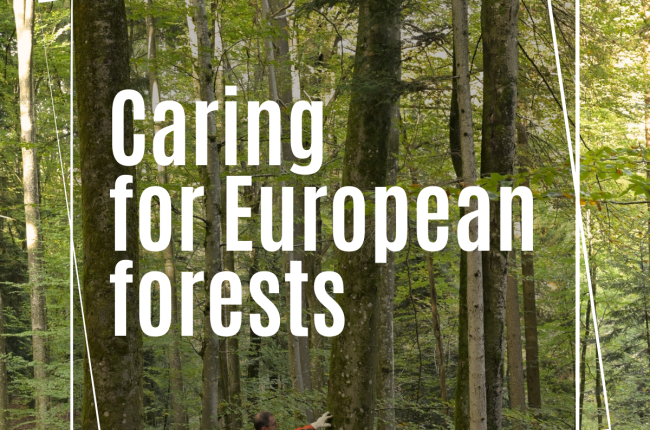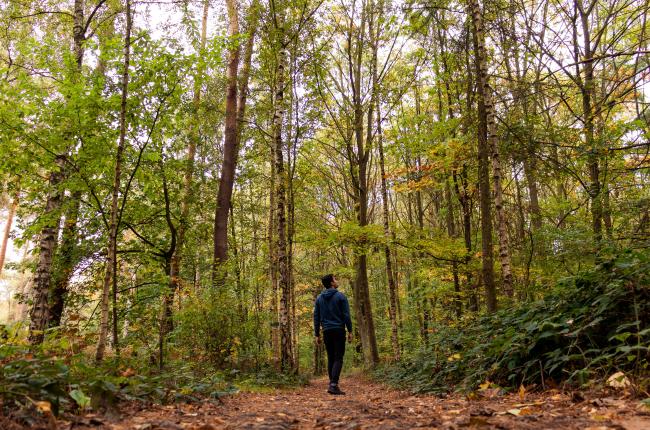While more than one third of Europe is covered by forests which provide European citizens with economic, environmental and social benefits, the multifunctional role of forests is all too often overlooked. This is mainly due to the spread of generalised messages, such as the degradation of EU forests, the purely commercial use of forests, etc. Such messages underestimate the continuous efforts undertaken by forest owners and managers to ensure sustainable forest development and to maximise their potential to serve people, the climate and nature. In fact, EU forest owners and managers have a long tradition of and hands-on experience in sustainable management of multifunctional forests. The objective of the event was to explain this expertise and experience through concrete cases and to discuss how this should be encompassed into EU policy making.
The event was split in two parts: the first one focusing on practical examples of multifunctional forest management from all over Europe; the second putting the light on the current forest-related policy discussion at the European level. Johan Elvnert, Managing Director of the Forest-based Sector Technology Platform (FTP), took care of the event moderation.

After the opening statement by MEP Sarvamaa, rapporteur for the EP’s initiative report on the EU Forest Strategy, Roland Kautz, from the Austrian Federal Forests (ÖBf), set the scene and described the core principles behind the management of multifunctional forests. Using examples from all over Austria, he highlighted how the different societal expectations compete with each other and how a multifunctional approach of forest management aims to answer best to all of them.
Coming from Northern Sweden, Kerstin Dafnäs, President of The Black Woodpecker (the Swedish association of women forest owners), presented her own forest and the management taking place there. Mrs Dafnäs’s forest includes stone age heritage, reindeer grazing areas and wetland. In her daily sustainable forest management, she has to take into account these specificities as well as all users, whether mushrooms pickers, hikers, Sami or local entrepreneurs. In her conclusion, Mrs Dafnäs underlined that a strength of European forests is their decentralised ownership which is key for their diversity and local engagement.
Robert Sambolek, from Croatian Chambers of Agriculture, introduced the tools used in Croatia to enhance the multifunctional role of Croatian forests. Forests in Croatia cover more than 45% of the territory and their management is based on the sustainable forest management’s principles, with the aim of preserving the natural diversity and structure of forests. To support the increase of forest resilience, environmental value of forests and wood stock, Mr Sambolek presented different sources of financing available such as a “green tax” and European funds.
The last example from practitioners was given by Conceição Santos Silva, from the Union of the Mediterranean Forest (UNAC). Mrs Santos Silva presented the Montado Agroforestry, a man shaped forest of cork and holm oaks in Portugal. In this area, management practices to address multifunctionality range from cork harvesting to shrub control by sheep grazing and have shown to be the most efficient to maximise ecosystem services when compared to land abandonment or intensification scenarios.

Following those various examples and a Q&As session, the floor was given to decision makers who expressed their views about the next steps for the implementation of the EU Green Deal. The panel highlighted the importance of collaboration between policy makers and the forest sector and how it is central to optimising the multiple benefits provided by forests. This is particularly relevant within the context of climate change and emerging societal expectations in Europe. Pierre Bascou, Director for Sustainability and income support in European Commission’s DG Agriculture and Rural Development, underlined that we need stronger engagement and collaboration of all stakeholders for reaching the EU Green Deal objectives through the EU forest sector. Ossi Martikainen, Chair of the Committee of the Regions’ Commission for Natural Resources, emphasised that involvement of local authorities and collaboration between regions will play a big role in ensuring that EU forests can importantly contribute to the development of the EU. When addressing the specific needs of future EU forest-related policies, Robert Režonja, Director-General of Forestry and Hunting Directorate in the Slovenian Ministry of Agriculture, Forestry and Food, insisted on the new EU Forest Strategy to be an equal part of the EU Green Deal.
In his closing remarks, MEP Petri Sarvamaa joined the view of Mr Režonja and stated : "A self-standing and robust EU Forest Strategy is the most appropriate tool to enable multifunctional EU forests to tackle the challenges of our time.”
Actors in the forestry sector believe that a balanced approach to all forest functions is key to ensuring consistency between forest-related policies. This is especially true when taking into consideration the scope of the European Green Deal. The future EU Forest Strategy should establish a framework for all relevant initiatives within the European Green Deal. These include the EU Biodiversity Strategy, the EU Climate Law – achieving climate neutrality by 2050, the EU bio-based circular economy, the Common Agricultural Policy (CAP) and other policies.





